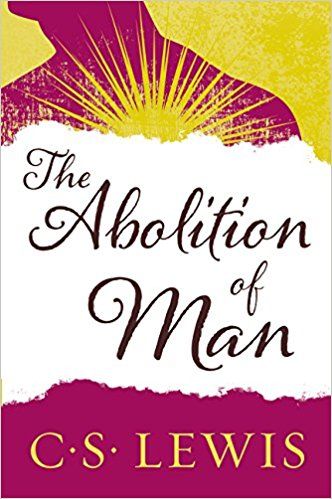
The Existence of a Real World
I’d posted recently on Stefan’s debate with a post-modernist who, despite at first proclaiming that post-modernism was nothing like what its detractors claimed, managed to only hold onto anti-authoritarian as his personal view (and as Lewis will later teach us, even that is just his preference). I’d also started reading The Abolition of Man, and noted how it was an attack on the undercurrents that would later form post-modernism well before it had crystallized with Derrida, etc.
Nevertheless, it’s clear that it goes back so much further than the 60’s as even in 1943 the trends were there for the wise to clearly see, define, and warn us.
Until quite modern times all teachers and even all men believed the universe to be such that certain emotional reactions on our part could be either congruous or incongruous to it—believed, in fact, that objects did not merely receive, but could merit, our approval or disapproval, our reverence or our contempt.
Here he’s discussing, again, feelings such as those engendered when we find a waterfall sublime, or a coward contemptible (the latter is my own example). There is a lot related here – that things around us exist. That they have an independent reality and a nature that doesn’t change simply because our perceptions of them do. That there are value judgements that can be made of them because, as things that exist, they can possess properties such as virtue, utility, beauty. That emotions we feel may or may not line up with the objective nature of what we perceive (we may feel offended when none has given offense, a reaction that may be natural due to frustration, etc., but incongruous to actual intent or reality, or awe at something deserving of awe). That there is, in some way, objective beauty, objective courage, objective cowardice, objective charity, and objective greed.
Later, he makes this explicit:
emotional states can be in harmony with reason (when we feel liking for what ought to be approved) or out of harmony with reason (when we perceive that liking is due but cannot feel it). No emotion is, in itself, a judgement; in that sense all emotions and sentiments are alogical. But they can be reasonable or unreasonable as they conform to Reason or fail to conform.
In between these he applies the label “Tao” to the overlapping of truth and worldview found in Stoic, Christian, Aristotelean, and Oriental philosophies and faiths.
It is the doctrine of objective value, the belief that certain attitudes are really true, and others really false, to the kind of thing the universe is and the kind of things we are. Those who know the Tao can hold that to call children delightful or old men venerable is not simply to record a psychological fact about our own parental or filial emotions at the moment, but to recognize a quality which demands a certain response from us whether we make it or not.
Think of a chunk of log, fairly thick, a few feet across, a few feet long. It’s a log. What else it is, depends on our needs, and goals, and desires. This, again, is where Jordan Peterson, for example, points out that there is a kernel of truth to post-modernism. What we see, the labels we apply, are based on our needs, and we bring concepts into being by inventing needs and labels for them. That log may be a chair, a stool to stand on, a barrier, or a decoration. It’s utility may change based on the filter of our intent. Nevertheless, the plethora of labels and viewpoints is bounded. Both by the things we can do without destroying its nature, but by the fact that despite any of the above uses, it remains round, flat of ends, made of “wood”, and covered around its circumference in “bark”. If we split it, it suddenly becomes “firewood” – and it no longer is recognizably a round section of a trunk of tree. We can rename these things but yet, they remain, and do not transmute simply because we relabel them, or because we decide it is a stool, because we need somewhere to sit.
It is it’s nature as a log that enables it to be all those other things when needed – including, through selective destruction, firewood. It can be strong and whole, or rotted and useless as even decoration.
And so a waterfall can be a source of water, but it can be a thing of beauty in itself, how it catches the light, revealing the wonders of nature and creation. The deeper we look, the more we learn of philosophy and physics as a natural philosophy, the more wonders as we learn how light traces through, how the mist forms, or simply sit back and enjoy the play of light, and form, and air and water.
We can change the labels, but it still remains what it is, retains its beauty and wonder, until we do something that alters its very nature.
In tearing these things down, in saying that a waterfall is not sublime, that it is indeed only our perception of it, we cheapen its beauty, and pave the way to say that nothing is beautiful, as it’s all arbitrary and in our heads.
